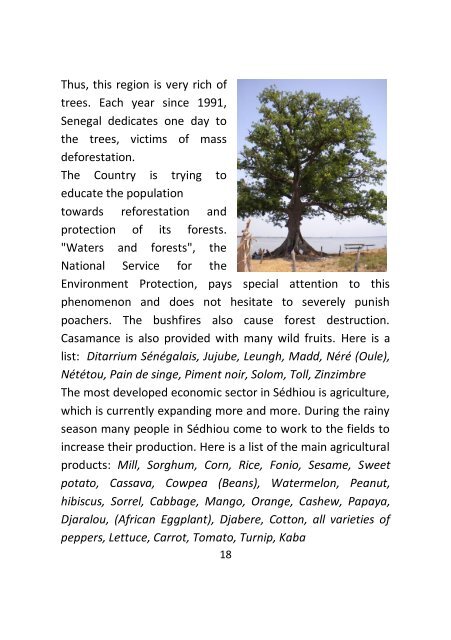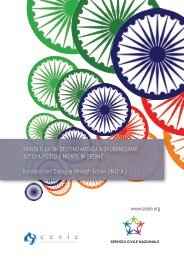GUIDE OF SÉDHIOU - Cesie
GUIDE OF SÉDHIOU - Cesie
GUIDE OF SÉDHIOU - Cesie
You also want an ePaper? Increase the reach of your titles
YUMPU automatically turns print PDFs into web optimized ePapers that Google loves.
Thus, this region is very rich of<br />
trees. Each year since 1991,<br />
Senegal dedicates one day to<br />
the trees, victims of mass<br />
deforestation.<br />
The Country is trying to<br />
educate the population<br />
towards reforestation and<br />
protection of its forests.<br />
"Waters and forests", the<br />
National Service for the<br />
Environment Protection, pays special attention to this<br />
phenomenon and does not hesitate to severely punish<br />
poachers. The bushfires also cause forest destruction.<br />
Casamance is also provided with many wild fruits. Here is a<br />
list: Ditarrium Sénégalais, Jujube, Leungh, Madd, Néré (Oule),<br />
Nététou, Pain de singe, Piment noir, Solom, Toll, Zinzimbre<br />
The most developed economic sector in Sédhiou is agriculture,<br />
which is currently expanding more and more. During the rainy<br />
season many people in Sédhiou come to work to the fields to<br />
increase their production. Here is a list of the main agricultural<br />
products: Mill, Sorghum, Corn, Rice, Fonio, Sesame, Sweet<br />
potato, Cassava, Cowpea (Beans), Watermelon, Peanut,<br />
hibiscus, Sorrel, Cabbage, Mango, Orange, Cashew, Papaya,<br />
Djaralou, (African Eggplant), Djabere, Cotton, all varieties of<br />
peppers, Lettuce, Carrot, Tomato, Turnip, Kaba<br />
18



